Oscar Howe was a Yanktonai Sioux Indian, born on the Crow Creek Reservation in South Dakota in 1915. Howe attended the Pierre Indian School until he reached 18-years of age. Then he went to the Santa Fe Indian School to finish his high-school career.
While in high school, Howe was already doing exceptional work following the studio style of art. He had exhibits state-wide from New York City to San Francisco and abroad in London and in Paris.
Oscar Howe spent a few years teaching art, at the same school he had attended during his childhood before he enlisted into the United States Armed Forces. During World War II he was stationed in Europe for four years. In Europe is where Howe experienced a new style of art that later became a major influence in his work.
After Oscar Howe returned to the United States, with his new bride, he taught art while working towards his undergraduate degree at the Dakota Wesleyan University. Howe earned a Master of Fine Arts degree from the University of Oklahoma in 1954.
There, Howe began to develop his personal style which included cubism mixed with Sioux influences. In 1957, at age 43, Oscar Howe was appointed Assistant Professor of Fine Arts at the State University of South Dakota. During the same year, he also held his first one-man retrospective in Santa Fe, New Mexico.
Oscar Howe’s style of painting, in the later years, was marked as New Indian Painting. Howe was and is considered a pioneer of this new form as it began its rise in the 1950s. Native American artists moved beyond the Traditional Indian Paintings and began to develop a style using modern characteristics such as Cubism and Abstract Expressionism. This is easy to see in Oscar Howe’s Horses, 1963.
There are several factors that caused the shift from Traditional Indian Painting to New Indian Painting. One of these factors was the World Wars in which Indian soldiers had the largest number of enlistments. When their duty was up and the Indian soldiers returned home ceremonies to purify them were held to welcome them back. Also, as in the case with Oscar Howe, Native American artists in the 1950s were more widely exposed to the national and international art scene than the artist that came before they had been.
Oscar Howe, The Ghost Dance refers to the Ghost Dance Movement in which ritual dances were performed to bring back dead loved ones and make them invulnerable to bullets.
The United States government ordered a ban on Ghost Dancing afraid of large gatherings of Indians. The Lakota Sioux, in violation of the ban, held a Ghost Dance. The government sent troops to stop the dance and ended up opening fire on the Lakota Sioux with automatic weapons. The death toll was over 200 men, women, and children.
Oscar Howe has earned many awards from 1947 to his death in 1983. He has many private collections as well art in museums and galleries all across the countryside such as the Gallup Art Gallery in Gallup, New Mexico; Denver Art Museum in Denver, Colorado; and the U.S. Department of the Interior in Washington, D.C.
Howe’s Murals decorate several public buildings including the Corn Palace in Mitchell, South Dakota. Also, located at the Joslyn Art Museum in Omaha, Nebraska is a permanent collection.
Oscar Howe was not only an exceptional artist, he was also a successful teacher. It was primarily through his efforts that it became acceptable for Native American artists to break away from Traditional Indian style’s to other artistic styles such as New Indian Painting. Howe’s goal was to express truths through his paintings that were once deeply personal to him and his people.
In 1969, he wrote, What I hope to accomplish in my painting is satisfaction in content and form with completeness and clarity of expression, and to objectify the ³truths² in Dakota culture and present them in an artistic way.²
BIBLIOGRAPHY
Legacy of the West, 1982. Josyln Art Museum/Center for Western Studies. 65/66.
Native American Fine Art Movement: New Indian Painting; 03/10/97; http://www.heard.org/EDU/NAFAMRG/rsrcch7.htm

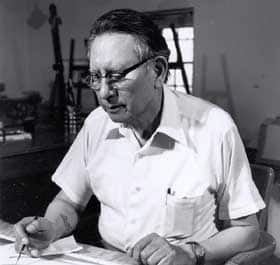
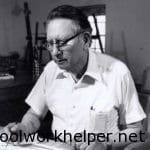
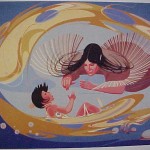
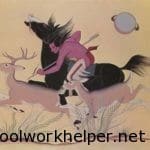
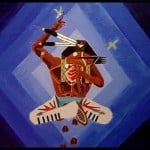
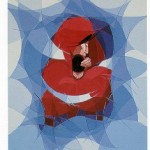



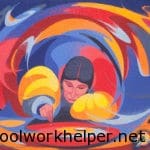
this is amazing